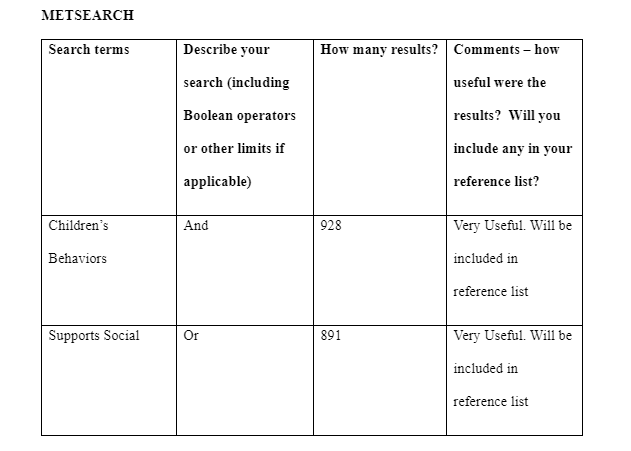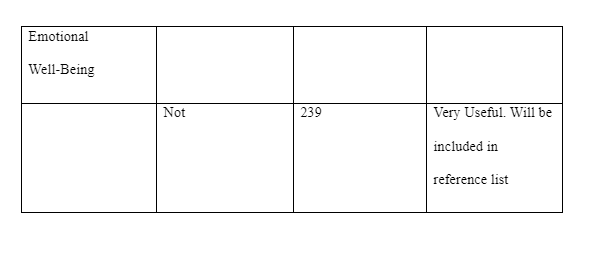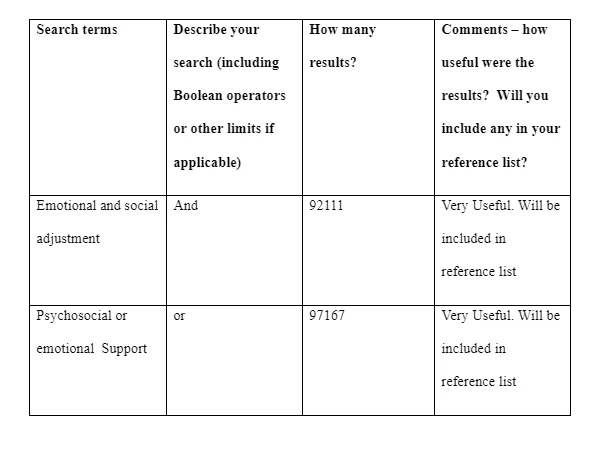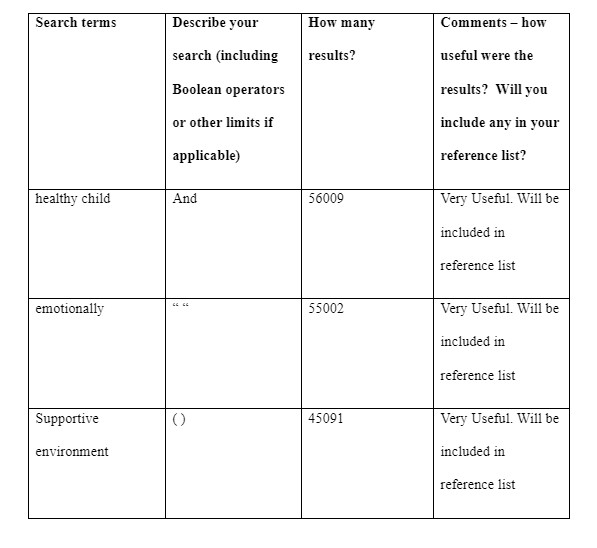Education Beyond Content Knowledge for Holistic Development
Task 1 - Topic (10 marks)
The education system currently concentrates on a narrow sliver of the cognitive development of children, emphasizing on the transmission of content knowledge. This content knowledge is often repeated and memorized just as it was received. Lessons in science, math, and reading, and the exams, dominate the curriculum. Although these are fundamental subjects, learning is far more than simply getting inert knowledge in chemistry or algebra. This focus offers short shrift to the different ways that a children’s needs for growth and education in their identity, emotional understanding, relationships, and overall well-being. This topic is critical since in the school setting is a very important place for every child. It is the place that offers daily chances for teachers and other professionals to establish a connection with children and their families, recognize challenges, and offer them support. Besides the home of a child, there is no other setting that influences the mental health and well-being of a child more than the school setting. It is therefore a critical place for fostering health emotional, mental, and behavioral development (Marulanda, 2010). A child is a multi-dimensional ‘whole’ being, and their development is rich and complex (Flook, 2019). Recent researches in sociology, education, developmental and learning sciences, neuroscience, among other fields confirm that the approach of a ‘whole child’ is necessary in ensuring that children receive better education. According to research reports by Osher et al. (2020) and also Cantor et al. (2019), the development of a child brain is shaped by supportive, consistent relationships, and responsive communications. Besides learning is academic, emotional, and social. Positive relationships and emotions open up a child’s mind to learning, while negative emotions reduce the brain’s capacity to learn and process information. This research aims at finding out how the behaviors of children are managed in the learning institutions that support emotional and social well-being, with insights that could benefit from healthcare dissertation help.

Key words
Behaviors, Social, Emotional, Well-Being, Mental-health and environment
Task 2 - Research Strategy Worksheet (15 marks)
Developing a search strategy will:
- Improve your results when searching
- Save time by planning and keeping a record of search terms


EDUCATION RESEARCH COMPLETE


JSTOR

Task 3 - Book and Journal article reviews (15 marks)
Books
The requirements for an emotionally healthy child (Hunter, 2015; Book)
A child requires a certain degree of healthy social and emotional development to achieve success in school and be emotionally ready and able to learn. This level of development involves having the ability to handle success and failure and having the resilience to manage them, plus the ability to ask for help if need be. Children require positive experiences in their learning environments to handle themselves well, managing the school day and everything it entails. School day management involves having a sense of self-esteem and confidence, a positive self-image, self-reliance appropriate for their age, a strong sense of self, and understanding their feelings and expressing them. These children also require security and stability to manage unpredictability and change without it eroding their safety feelings.
For a child to manage their stress levels, they need to have experience from an adult. A baby cannot regulate its stress; they rely on caregivers to do it for them. For instance, if a baby cries because of hunger, the adult responds with concern and love, reducing the baby’s stress. Ignoring the baby can increase their stress levels. How the caregiver responds to the child’s stress can help the child develop its stress regulatory system or add more stress and hinder the development from happening. A child, therefore, requires a caring and loving environment. School life also requires a child to develop some level of autonomy, becoming more independent as they continue schooling. Transitioning to a new environment can be a big challenge. The child needs the right environment with the right balance between protecting, guiding, and nurturing the child and allowing them to experiment and explore. The ability of a child to develop self-reliance and act independently is dependent on various factors, and it is affected by their self-esteem, self-worth, and confidence, coupled with the opportunity for developing the skills.
Creating an integrated school support system (Duncan and Murnane, 2011; Book)
Not every child has the social and material capital to afford accessing high-quality learning experiences and environments. For instance, according to Duncan and Murnane (2011), a lot of high-income parents spent more on ‘enrichment activities’ for their kids, such as extracurricular activities and tutoring over the past few decades, as opposed to a smaller percentage of low-income parents. These difference gaps show the existing gap between the low-income students and the affluent students.
Schools need to offer additional support for the children experiencing adversity in forms of homelessness, poverty, learning obstacles, food insecurity, or lack of health care. Schools should have a flexible support system for addressing these needs. This could be accomplished by the schools partnering with community organizations and families to offer well-rounded educational opportunities and support for the success of students in school (Taylor and Dymnicki, 2007). Additionally, by partnering with community organizations, schools offer mental health, health, and social services to assist students in overcoming the challenges of learning.
Continue your journey with our comprehensive guide to Educating in Health and Social Care.
Articles
Fostering a Supportive environment (Bear et al., 2015; Journal)
Not many students would rate their school positively. A lot of schools are founded on antiquated models from the early 1900s emulating the factory model. These designs depersonalize learning when students require and would gain from long-term relationships with peers and teachers. Developing a positive school climate on the basis of strong relationships offer a learning bedrock.
A student should have a sense of belonging and safety to excel in school. For instance, one way of helping students to develop a sense of belonging is engaging them in creating their shared classroom norms that can be regularly referred to, and assigning classroom tasks involving every student in supporting the community. Additionally, a teacher can aim to pass high expectations and offer enough support for every student, showing them that they have the ability. Generally, a positive school climate is aimed at fostering deeper relationships among the students and adults in promoting a sense of belonging and safety, two factors conducive to learning.
Engaging, meaningful instructional practices (Goldberg et al., 2019; Journal)
A lot of students drop out of schools when they feel that the school were not interesting. The young people quickly become bored and disengaged from school. Students want to have opportunities for learning things that matter and have relevance to their lives (Zins and Elias, 2007). Instruction can aid in the growth of a student’s comprehension when it builds on the prior experience of the student. For instance, a teacher can connect a Civil Rights movement history unit to modern day challenges such as brutality of police against people of color.
When inquiry-based learning fueled by the interests of students is carefully combined with direct instruction, it boosts the motivation of these students, developing real-world skills. Assessments including feedback and revision opportunities help students in learning and developing an intrinsic desire for understanding the material and challenge themselves, not simply making a grade. This master-oriented method is linked to more meaningful learning. The control of students over their education can also be promoted by practices such as student-led conferences where the student is allowed to regularly present their work to teachers and parents and reflect on their education and targets. These strategies ensure that learning is not boring, and they connect learning to the lives of the students, empowering them to utilize their knowledge for their advantage.
Task 4 - Supplementary evidence (15 marks)
The primary goal of this paper is researching how behaviors of children can be managed in schools by programmers in an environment supporting their social and emotional well-being. The introduction introduces the topic and how it is important for a child. The research strategy includes a detailed guideline on the choosing of the related studies as evidence in the research. The book and journal review section writes the findings of the chosen studies and evidences, while reflective summary details the various facets of the research topic.
Task 5 - Reference list (15 marks)
References
Bear, G.G., Whitcomb, S.A., Elias, M.J., & Blank, J.C. (2015). "SEL and Schoolwide Positive Behavioral Interventions and Supports." In J.A. Durlak, C.E. Domitrovich, R.P. Weissberg, & T.P. Gullotta (Eds.), Handbook of Social and Emotional Learning. New York: Guilford Press.
Bierman K. L., Mathis E. T., & Domitrovich C. E. (2018). Serving the needs of young children with social, emotional, and behavioral needs: a commentary. School Mental Health. 10(3): 254-263. doi: 10.1007/s12310-018-9265-4
Cantor P., Osher D., Berg J., Steyer L. & Rose T. (2019) Malleability, plasticity, and individuality: How children learn and develop in context, Applied Developmental Science, 23:4, 307-337, DOI: 10.1080/10888691.2017.1398649
Duncan G. J. & Murnane R. J. (2011). Whither opportunity? Rising inequality, schools, and children’s life chances. Russel Sage Foundation. Retrieved from https://www.russellsage.org/sites/all/files/Whither%20Opportunity_Executive%20Summ ary.pdf
Durlak J. A., Weissberg R. P., Dymnicki A. B., Taylor R. D., & Schellinger K. B. (2011). The impact of enhancing students’ social and emotional learning: a meta-analysis of school- based universal interventions. Child Development. 82(1): 405-432. https://doi.org/10.1111/j.1467-8624.2010.01564.x
Goldberg J. M., Sklad M., Elfrink T. R., Schreurs K. M., Bohlmeijer E. T. & Clarke A. M. (2019). Effectiveness of interventions adopting a whole school approach to enhancing social and emotional development: a meta-analysis. European Journal of Psychology of Education. 34, 755-782.
Herman B., Curtis G., & LeSage T. (2020). Social and emotional learning in virtual, in person, and physically distanced environments. Wisconsin Department of Public Instruction.
Hunter C. (2015). Understanding and managing children’s behavior through group work; Ages 5-7: A child-centered programme. Routledge, Taylor & Francis Group. London and New York.
Mindess, M., Min-hua Chen, & Brenner, R. (2008). Social-emotional learning in the primary curriculum. Young Children, 63(6), 56-59.
National Academies of Sciences, Engineering, and Medicine. (2019). Fostering Healthy Mental, Emotional, and Behavioral Development in Children and Youth: A National Agenda. Washington, DC: The National Academies Press. doi: https://doi.org/10.17226/25201.
Norris, J. A. (2003). Looking at classroom management through a social and emotional learning lens. Theory into Practice, 42(4), 313-318. Retrieved November 4, 2009, from Academic Search Complete database.
Osher P., Cantor P., Berg J., Steyer L., & Rose T. (2020) Drivers of human development: How relationships and context shape learning and development1, Applied Developmental Science, 24:1, 6-36, DOI: 10.1080/10888691.2017.1398650
Taylor, R. D., & Dymnicki, A. B. (2007). Empirical evidence of social and emotional learning's influence on school success. Journal of Educational & Psychological Consultation, 17(2), 225-231. doi:10.1080/10474410701346725
Thapa, A., Cohen, J., Gulley, S., & Higgins-D'Alessandro, A. (2013). "A review of school climate research." Review of Educational Research, 83(3), pp.357-385.
Yoshikawa H., Weiland C., Brooks-Gunn J., Burchinal M. R., Espinoza L. M., Gormley W. T., Ludwig J., Magnuson K. A., Phillips D. & Zaslow M. J. (2013). Investing in our future: The evidence base on preschool education. New York, NY: Foundation for Child Development.https://www.fcd-us.org/assets/2016/04/Evidence-Base-on- PreschoolEducation-FINAL.pdf
Zins, J. E., & Elias, M. J. (2007). Social and emotional learning: Promoting the development of all students. Journal of Educational & Psychological Consultation, 17(2), 233-255. doi:10.1080/10474410701413152
Task 6 - Reflective summary (30 marks)
The utility of quality childhood education and care for improving mental, emotional and behavioral outcomes has been properly established (Yoshikawa et al., 2013). It includes socioemotional development, long-term positive academic learning impacts, and health. There is yet to be a single definition of the constituents of high-quality child care. However, the National Association for the Education of Young Children (2019) came up with ten excellence standards for early childhood education. These standards include factors supporting different child development and well-being facets, not just the basic requirements to create a safe and healthy environment. For instance, the standards ask for inclusion of activities encouraging individual’s sense of self-worth of a child, promote positive relationships, a coherent curriculum fostering all child development areas, instruction in nutrition, health, and illness/injury prevention, inclusion of home-school communication and ongoing progress assessment, coordination with community resources, and access to qualified professional and teaching staff.
Increasing evidence illustrating the long-term advantages of attending preschool increases the hope that improvement of entry to high-quality early childhood education can promote the attainment and modification of school for all kids, mostly the most vulnerable (Yoshikawa et al., 2013; Herman et al., 2020). Going through a high-quality early childhood education has numerous long-term mental health and academic benefits, such as a minimal need for special education services and improved school adjustment (Bierman et al., 2018). Unfortunately, a lot of school programs have a mediocre quality, with inadequate opportunities for professional development to aid the tutors in implementing evidence-based practices that address the social and emotional needs of a child effectively (Mindess et al., 2008). For the above rationales, the basis of this research is particularly timely and important. The development and assessing of school interventions addressing the emotional, social, and behavioral needs of school-going children needs to be a national priority.
As a result of the scarcity of rigorous studies, Jordans et al. (2009) argues that the diversity of interventions researched, and the prevailing conditions in which interventions are carried out, it is hard to make solid conclusions on the effect of psycho-social interventions. Although there were some evaluations that looked promising, the controlled studies effect sizes are moderate at best, while some evaluations were argued to have methodological flaws (Jordans et al., 2009). They indicate an existing gap between research, practice and policy with a serious lack of evidence-based interventions literature and presentation of approaches application.
A growing research body suggests that emotional and social skill development should be implanted within the whole school for optimal impact, multi-modal theory (Goldberg et al., 2019). The multi-modal approach basically entails synchronized action between teaching, curriculum, and schooling; the learning environment and ethos; and community and family cooperation. The outcomes from this study indicate a small, but weighty positive effect of the interventions on the emotional and social adapting of a student, as well as internalizing symptoms and behavioral adjustment. Whole school interventions did not seem to have an effect on academic attainment. Moderator research offers proof that interventions evaluated and implemented in America had more impact in the enhancement of the social and emotional adaptation of participants than non-American interventions. To further the comprehension of requirements needed to attain successful results, a bigger focus on implementing the research and identifying important components of the interventions of whole school is needed.

At school level, social and emotional learning formulas generally come as exercises, policies, or anatomies relating to climate and support services of students. Safe and improved school cultures and climates possess a positive influence on behavioral, academic, and mental health results for students (Thapa et al., 2013). School leaders have an important role to foster schoolwide policies and activities that encourage positive school environments, for example adult fashioning of emotional and social proficiency, and creating clear values, norms, and goals for both learners and members of the staff.
Bullying prevention practices and fair, equitable policies are highly effective, unlike purely behavioral methods depending on punishment and reward (Bear et al., 2015). Schools can arrange for activities for building up positive connections and a community sense among students using methods like regular advisories or morning meetings that give the students opportunities to interact with each other. An essential element of schoolwide social and emotional learning includes amalgamation into multi-tiered support systems. The services offered by professionals to learners have to align with universal classroom efforts. Often by using small group work, the professional of student support supplement and reinforce classroom-based instructions for students in need of more intensive treatment or early intervention.
- 24/7 Customer Support
- 100% Customer Satisfaction
- No Privacy Violation
- Quick Services
- Subject Experts



